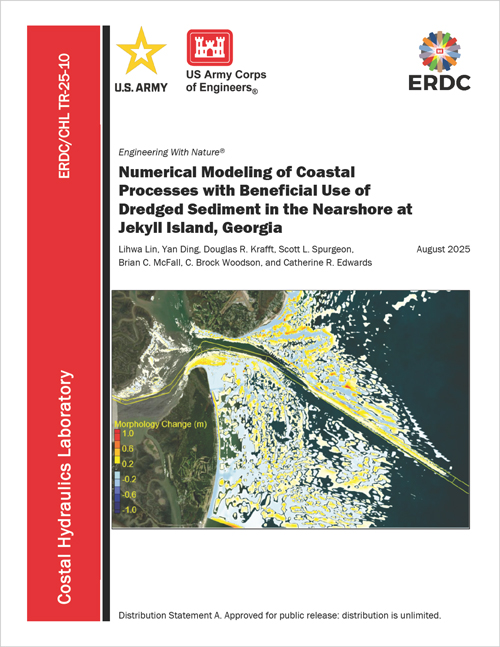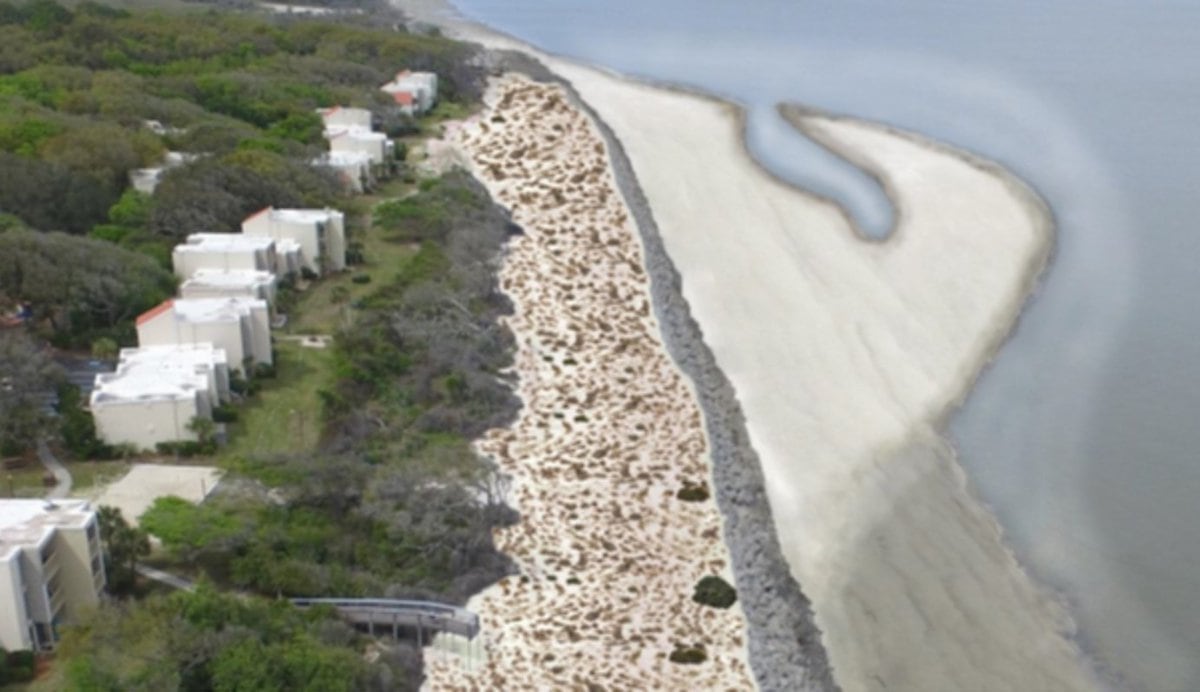This report provides numerical model results to assist the US Army Corps of Engineers–Savannah District (SAS). These results evaluate beneficial use alternatives for the sediment from an advance maintenance widener of the Brunswick Harbor Entrance Channel between stations −14+000 and −28+000. This study applied a coastal wave, hydrodynamic and sediment transport model (Coastal Modeling System), and a shoreline change model (GenCade), focusing on developing and simulating placement alternatives. Subaerial placement model results indicate better shore and beach preservation than at the nearshore nourishment. Placing sediment closer to the “transition zone” between the revetment and natural beach will increase the volume of sand that remains in that area. Some sediment is predicted to return to the channel, but these volumes are small fractions of t he placed material. GenCade results indicate that the transition zone rock debris decreases shoreline erosion. Removing it has less impact on that area than any of the subaerial nourishments, but this prediction does not include profile equilibration that may occur after the first 4 months. Overall, model results indicate that subaerial placement will have strong positive response at the eroding beach, and related increases to channel infilling rates are relatively small.



